 Released:2019-09-02 00:00:34
Released:2019-09-02 00:00:34 Views 1941 次
Views 1941 次 On September 12th, the second episode of “Forward Thinkers,” a program jointly launched by Netease Technology and Yang Lan, titled “Where is the Road for Chinese Chips?” officially aired. Yang Lan engaged in a dialogue with Professor Wei Shaojun, the director of the Microelectronics Institute at Tsinghua University, and Mr. Zhao Weiguo, the chairman of Tsinghua Unigroup, discussing the development path of Chinese chips. They delved into topics such as achieving independent controllability in chip development, the effectiveness of mergers and acquisitions, and strategies for addressing talent shortages.
On September 12th, the second episode of “Forward Thinkers,” a program jointly launched by Netease Technology and Yang Lan, titled “Where is the Road for Chinese Chips?” officially aired. Yang Lan engaged in a dialogue with Professor Wei Shaojun, the director of the Microelectronics Institute at Tsinghua University, and Mr. Zhao Weiguo, the chairman of Tsinghua Unigroup, discussing the development path of Chinese chips. They delved into topics such as achieving independent controllability in chip development, the effectiveness of mergers and acquisitions, and strategies for addressing talent shortages.

Chinese chips rely on imports: when you choose others, you will lose yourself.
On September 12th, the second episode of the program “Forward Thinkers” titled “Chinese Chips: Which Way to Go?” was officially launched by Netease Technology and Yang Lan. Yang Lan had a discussion with Professor Wei Shaojun, the director of the Microelectronics Institute at Tsinghua University, and Mr. Zhao Weiguo, the chairman of Tsinghua Unigroup, to discuss the development path of Chinese chips. Wei Shaojun, Zhao Weiguo, and Yang Lan had an in-depth discussion on how China can achieve independent controllability in the development of chips, whether mergers and acquisitions are effective means, and how to address talent-related issues.
“Forward Thinkers” is a special interview program by Netease Technology and Yang Lan, paying tribute to the 70th anniversary of the founding of the People’s Republic of China. It features conversations with scientists and entrepreneurs, exploring China’s progress in science and technology.
Behind the massive $312 billion import figure: Should we prioritize openness or self-reliance?
Compared to the “cut-off supply” incidents, a set of chip import data from 2018 sparked widespread discussions in the industry.
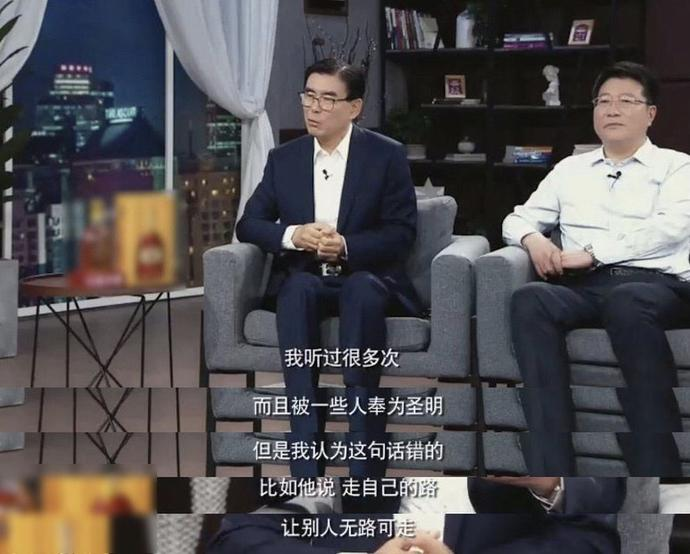
According to a report from the National Customs, last year China imported over 312 billion US dollars worth of chips, equivalent to the total import value of oil, steel, and food. This immediately caused a stir in the industry.
People interpreted a crisis from these figures and raised many questions: What do these numbers signify? Why does China need to import so many chips? If there’s a chip supply interruption, will the related information industry come to a halt? Can the chip sector achieve complete self-reliance and control?
A series of question marks were thrown into the air.
In the Netease Technology program “Forward Thinkers,” Wei Shaojun, Zhao Weiguo, and Yang Lan provided insights into the $312 billion import figure.

“The import figure should be viewed separately, as it actually reflects the fact that China is a major producer of electronic information products worldwide. We produce 90% of the world’s computers, 90% of mobile phones, 90% of household appliances…” Wei Shaojun believes that such a huge production volume requires a large number of chips, and the substantial import figure is not difficult to understand.
Wei Shaojun interpreted, on the other hand, that the global chip production totaled about $468.8 billion last year, with China importing $312 billion, accounting for two-thirds of the total. Of the imported chips, over $158 billion (about one-third of the total import) were used domestically in China, while around $160 billion (two-thirds of the total) were integrated into finished products and exported. At the same time, China domestically produced approximately $37 billion worth of chips annually.
“In reality, the imported chips that China actually uses only account for 40% of the import value, which is an important indicator of China’s integration into globalization,” said Wei Shaojun.
Behind the figure of 312 billion, on the one hand, China is an irreplaceable part of the global information industry globalization, and on the other hand, it indicates China’s heavy reliance on chips. In an interview with Netease Technology’s “Forward Thinkers,” Zhao Weiguo expressed that this is both an opportunity and a crisis for Chinese integrated circuit enterprises. “This relates to the security of the 20 trillion electronic information industry, and we are still being held by the neck. At the same time, it also indicates that Chinese chip companies have broad development prospects.”

How should the Chinese chip industry develop? Is it necessary to achieve complete “independent controllability”? This question continues to vex the industry, especially against the backdrop of the current international economic situation and the Huawei incident, which has brought the development of the Chinese chip industry to an unprecedented level of prominence.
Wei Shaojun believes that in the current macro environment, the development of China’s chip industry requires “strategic determination” and should not be led by others. On one hand, there needs to be a strong focus on developing independent chip technology, while on the other hand, continuous openness and cooperation are necessary. He argues that historical evidence of isolationism demonstrates that self-isolation leads to backwardness and regression. Integration into globalization, making more friends, and embracing open cooperation will pave the way for a broader path. Wei stated, “There’s a saying I’ve heard many times from the Chinese, and some regard it as wisdom, but I believe it’s wrong, that is, ‘Walk your own path and leave others with no way out.’”

In Wei Shaojun’s view, the integrated circuit industry chain is long and complex, and it is not necessary for us to do all the links ourselves; it is sufficient to only master the core technologies in some areas. Entrepreneur Zhao Weiguo also expressed a similar view, stating, “First, we should do our best at what we can do. Second, we should embrace others as tightly as possible, entangle with them, and not let go no matter what!”
How should the road to becoming a chip powerhouse be pursued? Can rapid development be achieved through acquisitions?
The history of chips is only sixty years, and the development of the Chinese chip industry has been full of twists and turns.
In 1958, the world’s first integrated circuit was born. In 1965, China’s first integrated circuit appeared. At that time, our gap with the world was only 7 years. However, in the following turbulent decade, China’s integrated circuit industry became isolated, resulting in a widening gap with the global advanced level.
After the reform and opening up in 1978, the development of the chip industry entered a new period. There were widespread discussions similar to “China can develop nuclear weapons and satellites, so why can’t it produce chips?” China began to vigorously explore the development path of integrated circuits, and the 908 and 909 projects were successively implemented. However, due to the high investment and high threshold of the chip industry, as well as the distance China fell behind during the turbulent decade, the catch-up journey of the Chinese chip industry has been quite difficult.
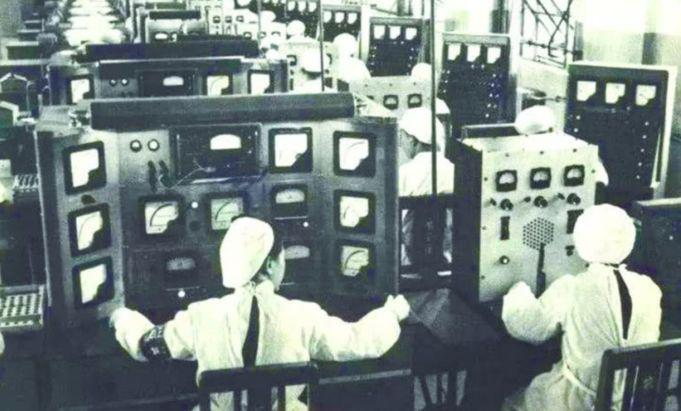
Early Development of Chinese Chips
In the process of continuous exploration, Wei Shaojun, as a pioneer in the chip industry, successfully developed the IC phone card chip, which many people considered “not worth the effort.” Although the IC card chip is simple, it played a crucial role in the first phase of China’s design industry development. “We are no longer at the mercy of others in IC card chips, gradually developing from nothing to something, and even to something good,” Wei Shaojun said.

Around the year 2000, an important strategic shift occurred in the Chinese chip industry. Wei Shaojun discussed in “Forward Thinkers” that at that time, the industry transitioned from “design serving manufacturing” to “manufacturing serving design,” and the previously unified industry split into three separate sectors: design, manufacturing, and packaging and testing, each developing independently.
After 2014, the development of China’s integrated circuit industry entered a new stage. In 2014, the “National Integrated Circuit Industry Development Promotion Outline” was released, and in the same year, the National Integrated Circuit Industry Investment Fund was established, with a fund size reaching 125 billion yuan. The development of China’s integrated circuit industry shifted from being primarily state-led to a joint effort of both state and private capital.
What direction should the Chinese chip industry take? Can R&D be achieved through acquisitions? The debate over independent R&D versus a buy-in approach in the chip industry has been ongoing.
In 2009, Tsinghua Unigroup was on the brink of bankruptcy. Zhao Weiguo took over as its president that year and began a series of acquisitions in 2013. In July 2013, Tsinghua Unigroup acquired Spreadtrum, a mobile chip company, for $1.78 billion. In July 2014, it acquired RDA Microelectronics, an RF chip company, for $907 million, followed by a majority stake in H3C (Huawei-3Com) in the same year.
The rapid pace and decisive actions sparked much controversy:Can the development of Chinese chips rely on capital operations?
Facing these doubts, Zhao Weiguo addressed them directly, stating in interviews that Tsinghua Unigroup, in its early development phase, used acquisitions to obtain complete teams, technologies, and even markets. The main aim was to save time and increase efficiency by investing more money, “Entering a new field is like crossing a river; we need to buy the bridgehead to enter the real battlefield.”
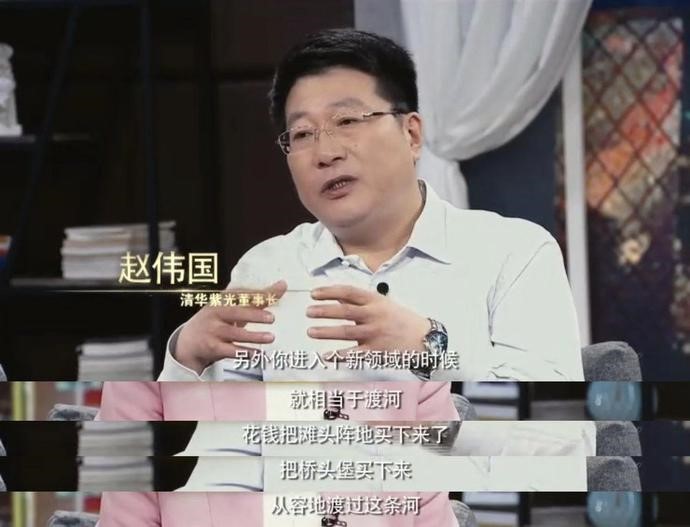
Currently, Tsinghua Unigroup has risen to the top three globally in the field of communication chips, with the release of dedicated chips for 5G and advancements in storage chip technology. Tsinghua Unigroup’s subsidiary, Yangtze Memory Technologies Co., announced the mass production of 64-layer 256GbTLC 3D NAND flash memory based on the Xtacking architecture in September this year.
The chip industry requires a long-term vision.
The importance of the integrated circuit industry is self-evident, and as Wei Shaojun puts it, this industry will continue to develop for several decades or even hundreds of years, with great potential.
When will the Chinese chip industry be considered strong? Wei Shaojun has given a standard: “If there is a company in China with a market value exceeding $100 billion and revenue of at least $30 billion, with 3 to 5 companies exceeding $10 billion, then the Chinese integrated circuit industry will definitely be among the top tier in the world.”
Currently, the development of the Chinese integrated circuit industry is still in its early stages. “The current stage of development in the Chinese integrated circuit industry is equivalent to the victory in the War of Resistance against Japan. Perhaps, this battle cannot be won in just three years; it will take five, ten, or even longer,” said Zhao Weiguo in an interview.
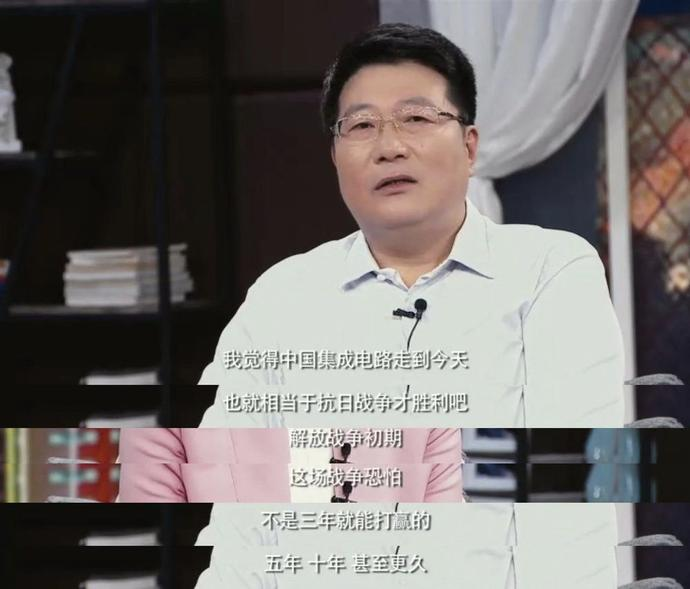
Moreover, the semiconductor industry is characterized by high technological barriers, long research and development cycles, and even longer investment return periods. In order to achieve the goal of being among the top players globally, it is necessary to avoid impetuosity.
Wei Shaojun emphasizes that in the integrated circuit industry, it is not about how good the product technology is, how much praise it receives, or what awards it wins. Rather, the focus should be on how much is sold in the market. In the market, only true abilities and achievements matter; there should be no room for deception.
Zhao Weiguo shares the same sentiment, believing that the current situation in the Chinese integrated circuit industry is primarily due to a shortage of talent and insufficient investment. Even the smallest chip design company requires an initial investment in the range of hundreds of millions, and from a more advanced manufacturing perspective, a single factory could cost up to $10 billion.
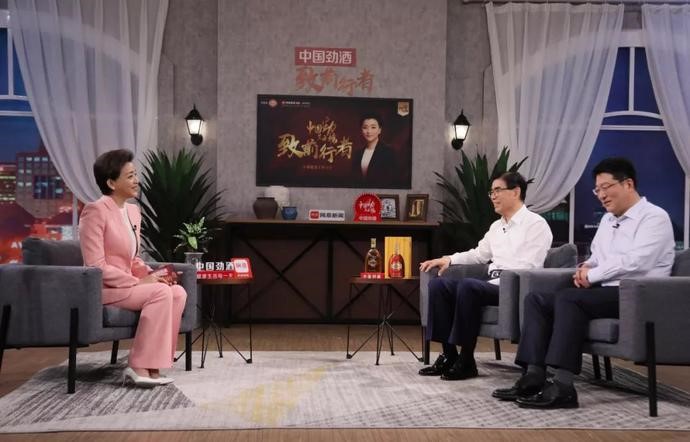
The talent issue has become urgent, testing the confidence and endurance of the Chinese chip industry.
Currently, there are 400,000 semiconductor professionals in China, with a shortfall of over 300,000. How to fill this gap and at what speed is the most practical issue facing everyone.
Wei Shaojun, being in academia, deeply feels the severity of the problem. “The talent cultivation cycle for semiconductor professionals is excessively long. It is difficult for university graduates to be utilized by companies, and obtaining a master’s degree takes six to seven years. If we start counting from today, it will be 2025 by the time they are available for employment.”
He also mentioned the unreasonable phenomenon in the industry. It is not advisable for companies to solve the talent shortage by poaching professionals from one another. Doing so only leads to higher salaries but does not raise the overall quality of the workforce. Long-term solutions cannot be achieved through poaching and mobility, so fundamentally, the supply of talent needs to be increased.
Wei Shaoguang suggests that first of all, we should encourage a group of people who are not engaged in the integrated circuit industry to transition into this field, and increase on-the-job training for employees. By improving the technical skills of existing employees, they can meet current demands.
The issue of dispersed human resources is also worth paying attention to.
Zhao Weiguo pointed out incisively: "Local governments' enthusiastic attraction of investment, some companies do not survive by the market, but by government subsidies, relying on investors for survival. On the one hand, it reflects that they have become a trend, but on the other hand, it has also planted deep hidden dangers for the industry, leading to significant dispersion of resources and human resources."
China's semiconductor industry requires patience, long-term vision, a down-to-earth approach, and openness.
010-62106066
( Monday to Friday 9:00 - 18:00 )
 704-705, Block D, Building 2, No. 9 Fenghao East Road, Haidian District, Beijing
704-705, Block D, Building 2, No. 9 Fenghao East Road, Haidian District, Beijing

Wechat Public Account